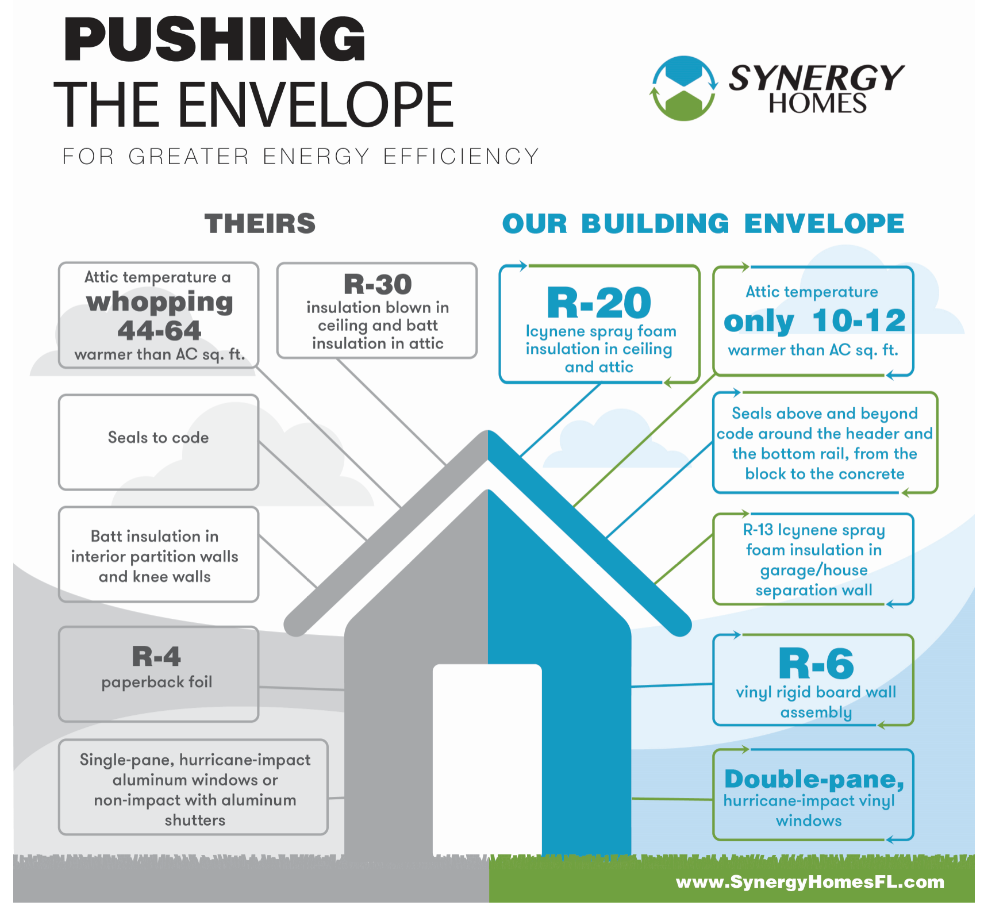As we continue the mission of reducing our environmental impact – the desire to live a more sustainable life with a smaller footprint becomes more important. As they say, it all begins at home. Energy efficient homes empower us to lead lifestyles that are easier on the environment and that do not scrimp on comfort, convenience, and style. Let’s look at examples of energy efficiency in homes so that you can determine if this is the right step for your future – and for all of our futures!
Examples of Energy Efficiency in Homes
One of the prime examples of energy efficiency in homes is in its parts. But a house is more than windows, doors, nails, screws, siding, flooring… Every system and component is designed to work together seamlessly for a high-performance living experience.
When searching for a good energy efficient home example, look no further than Synergy Homes’ Gold and Platinum Series. Our team of experts has honed the practice of creating beautiful high-performance houses down to a science. Our process results in homes that are 75 percent more efficient than existing homes. Impressive, but how do they stack up next to newly built models? After all, aren’t new homes supposed to reduce waste and deliver savings? Ideally yes! But our advanced techniques and materials ensure that our Gold and Platinum Series models are up to 50 percent more efficient than the average new construction.
The first question is: How do we do it?
Building Quality and Efficiency From the Ground Up
When most people think of examples of energy efficiency in homes, they stop at the doors and windows. But for a fully energy efficient home, it’s not enough just to install some energy efficient windows, use Energy Star rated appliances, or add in some insulation. While these are good steps to enhance the efficiency of an existing home or to boost savings for a new build, we believe that our clients deserve more.
As mentioned, it is crucial for all the systems, components, and elements of a home to work together to maximize performance. Design and construction must be executed at the highest level. Our team starts with a tight thermal envelope. The thermal envelope refers to any structure that separates outdoor air from indoor air. The roof, the foundation, the exterior walls, the windows and doors, and the insulation play a critical role in preventing cool air transfer during our long, hot Sunshine State summers and heat transfer during our winters. While typically mild, we don’t want to send our heating dollars right out the window – literally!
At the same time, a tight thermal envelope helps create a healthier indoor environment. You can reduce the volume of particles and pollutants that enter the home, which improves air quality. This is important for all of us, but especially for those who have allergies, asthma, respiratory issues, and other health conditions. Breathe easier: You’re home.
Our Thermal Envelope vs. Other Builders

As you can see, energy efficiency is built into every aspect of our Gold and Platinum Series homes. For example, a typical builder installs R-30 insulation blown in through the ceiling and batt insulation in the attic. This is the standard and, indeed, perfectly in line with recommendations from the Department of Energy (DOE). R-30 is usually specified for attics and is adequate for Florida’s climate (homes in the Northeast, by contrast, should have an R-value of between 38 and 60 to accommodate for the much colder winters).
Adequate is not good enough for us. Synergy Homes uses R-20 Icynene spray foam. Wait a minute… Doesn’t a higher R-value deliver better protection? Sure, if we are comparing apples to apples. With blown and batt versus spray foam, we’re comparing apples to pineapples. Spray foam is much denser than fiberglass and it offers better protection. Another factor to consider is that fiberglass loses R-value over time, leaving you with less insulative quality. Icynene spray foam does not lose efficacy.
You will be far more comfortable in your home, and you will realize savings month after month and year after year. An energy efficient house is a gift that keeps on giving: not only will you get a break on your utility bills now, but you will also continue to build value faster than an average home. If you consider your home an investment – and, for most of us, a house is the biggest investment we’ll make in our lives – you will get better returns with an energy efficient home.
See Examples of Energy Efficiency in Homes With Our Model Homes
These are just some examples of energy efficiency in homes. Coming home to an elegant, energy efficient house is easier than you may think. View our spec houses, choose a standard floor plan among our extensive library, or customize your own place to bring your unique vision to life. Our expert team will help you navigate each and every step with confidence, ensuring you find the solution that works for you, your household, your lifestyle, and your budget.
Connect with us to learn more.
Comments are closed here.